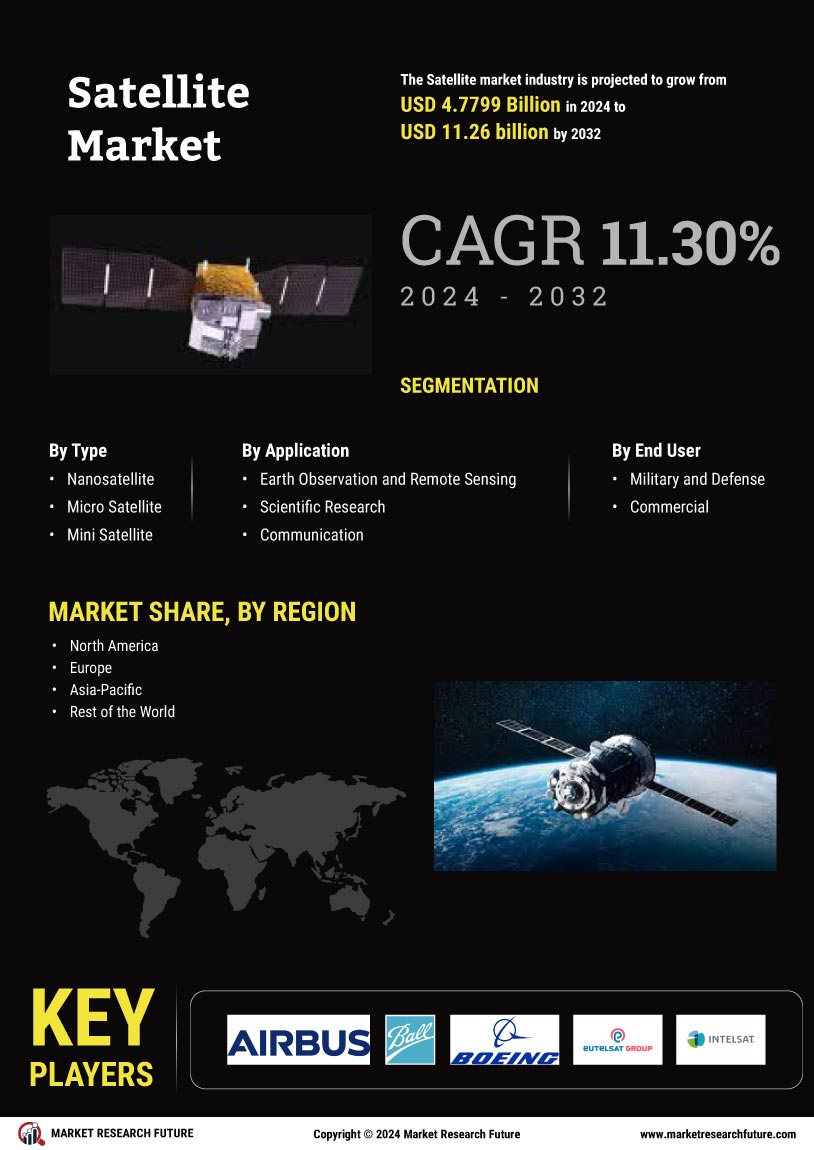Rising Commercial Space Activities
The Satellite Market is significantly influenced by the rise of commercial space activities, which are reshaping the landscape of satellite deployment and utilization. As of 2025, the commercial sector is projected to account for over 60% of satellite launches, driven by private companies entering the market with innovative solutions and competitive pricing. This trend is fostering a more dynamic environment, where traditional barriers to entry are diminishing. The increasing participation of private entities in satellite manufacturing and launch services is likely to enhance competition and drive down costs, making satellite technology more accessible. Furthermore, the collaboration between government agencies and private companies is expected to yield new opportunities for growth within the Satellite Market, as partnerships facilitate the development of cutting-edge technologies and services.
Advancements in Satellite Technology
Technological advancements are playing a pivotal role in shaping the Satellite Market. Innovations such as miniaturization, propulsion systems, and enhanced imaging capabilities are enabling the development of more efficient and cost-effective satellites. For instance, the introduction of small satellites, or CubeSats, has revolutionized the industry by allowing for rapid deployment and lower costs. As of 2025, it is estimated that small satellites will account for over 30% of the total satellite launches, reflecting a significant shift in market dynamics. These advancements not only enhance operational capabilities but also expand the range of applications, from Earth observation to telecommunications. The ongoing research and development efforts in satellite technology suggest a promising future for the Satellite Market, as companies strive to innovate and maintain competitive advantages.
Increased Focus on Earth Observation
The Satellite Market is witnessing an increased focus on Earth observation applications, driven by the growing need for environmental monitoring and disaster management. As of 2025, the Earth observation satellite segment is expected to capture a market share of approximately 25%, underscoring its importance in various sectors, including agriculture, forestry, and urban planning. The ability to collect and analyze data on climate change, land use, and natural disasters is becoming increasingly critical for governments and organizations worldwide. This trend is prompting investments in advanced satellite systems equipped with high-resolution imaging and remote sensing capabilities. Consequently, the Satellite Market is likely to see a surge in demand for Earth observation satellites, as stakeholders recognize the value of data-driven decision-making in addressing global challenges.
Growing Importance of National Security
The Satellite Market is increasingly shaped by the growing importance of national security considerations. Governments around the world are recognizing the strategic value of satellite capabilities for defense and intelligence purposes. As of 2025, military satellites are anticipated to represent a substantial portion of the overall satellite market, with investments in secure communication and surveillance systems on the rise. The need for reliable and resilient satellite infrastructure is paramount, particularly in the context of geopolitical tensions and emerging threats. Consequently, defense agencies are likely to enhance their partnerships with private sector companies to develop advanced satellite systems that meet national security requirements. This trend indicates a robust future for the Satellite Market, as the intersection of technology and security continues to drive innovation and investment.
Growing Demand for Communication Services
The Satellite Market is experiencing a notable surge in demand for communication services, driven by the increasing reliance on satellite technology for broadband connectivity. As of 2025, the number of satellite broadband subscribers is projected to reach approximately 10 million, reflecting a compound annual growth rate of around 15%. This growth is largely attributed to the need for high-speed internet in remote and underserved areas, where traditional infrastructure is lacking. Furthermore, the proliferation of Internet of Things (IoT) devices necessitates robust communication networks, further propelling the demand for satellite services. Consequently, companies within the Satellite Market are investing heavily in expanding their satellite constellations to meet this burgeoning demand, indicating a shift towards more integrated and comprehensive communication solutions.


















Leave a Comment